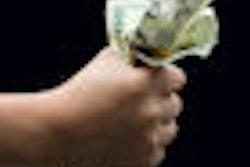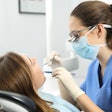
Many dentists are embracing bartering as a marketing strategy to bring in more patients by exchanging goods and services rather than charging a fee. Bartering also appeals to patients who need costly procedures for their families but don't have dental insurance.
Trade International Exchange (TIE) is a barter exchange network that allows members to buy and sell products and services using TIE Dollars rather than cash. Businesses in certain areas use TIE to trade with physicians, dentists, and pharmacies in exchange for medical services for their employees.
To get medical services for its employees, a business sets up the TIE Healthcare Program, activating a barter arrangement with TIE. Agreeing to buy and sell specific company goods and services, these commodities are exchanged for healthcare and other needs such as plumbers, electricians, painters, ad agencies, and printers. Upon a firm's request, TIE will pursue healthcare providers in areas that have no formal arrangements in place.
Exchange
In trade exchange networks, everyone trades with everyone, even if they do not want what the other person is offering, according to TIE. Trade dollars are credited to a trade account in the exchange, which can then be spent on goods or service from within the network.
"Bartering makes sense, especially because today many people don't have good health insurance and most people are underinsured," Stuart Kay, TIE marketing officer, told DrBicuspid.com. "Dentists have taken the opportunity to barter for years because it's easy for them to do as small-business owners."
Bartering can also help dentists with collections, Kay added.
Besides medical services such as dental care, TIE offers bartering for a range of services, including car rentals, travel, restaurants, clothes, jewelry, landscaping, spas, vacations, and even real estate.
For example, while many children need braces, their parents can't always afford it, Kay noted.
"If the parents are business owners, they can provide services like graphic design" in exchange for orthodontic services, he explained.
Marc Frankel, DDS, who has a practice in Hallandale Beach, FL, has provided oral surgery and preventive procedures for four patients in a family that owns a Latin restaurant in town. In exchange, his practice is being marketed in the restaurant.
"It's a restaurant that I like," Dr. Frankel told DrBicuspid.com. "I think it's a good idea."
More dentists are getting involved in bartering exchanges, according to Kay.
"People today need to be more creative because so many have lost dental coverage," he said.
He cited a manager of a high-end restaurant whose wife needed $20,000 worth of dental work. The manager traded exchange credits with an orthodontist who could then use the credits for whatever he wanted.
"Anything you can do with cash, you can do with trade, including healthcare," Kay said.
His brother, Marc Kay, DDS, uses the exchange to help market his Phoenix practice. Dr. Kay is one of 20 dentists who are TIE members.
The company charges a lifetime membership fee and a monthly maintenance fee. TIE also collects a percentage of the transaction when the goods are bought and sold, which range from 5% to 7.5% for both the buyer and seller.
Exchange credits are based on the retail price of goods or services, and dental procedures have set rates. Members can save their credits, and the company also offers lines of credit.
TIE has 1,000 members, including businesses and consumers. Some 65% of the Fortune 500 companies barter, Kay said, including charities that barter for millions of dollars.
"It's a way to market, get people in, and have fun," Dr. Frankel said.



















